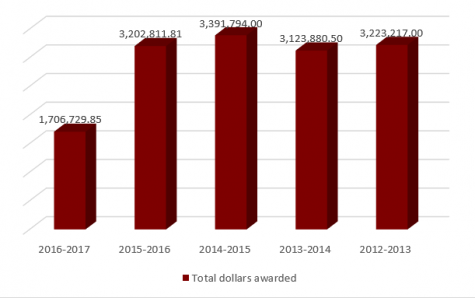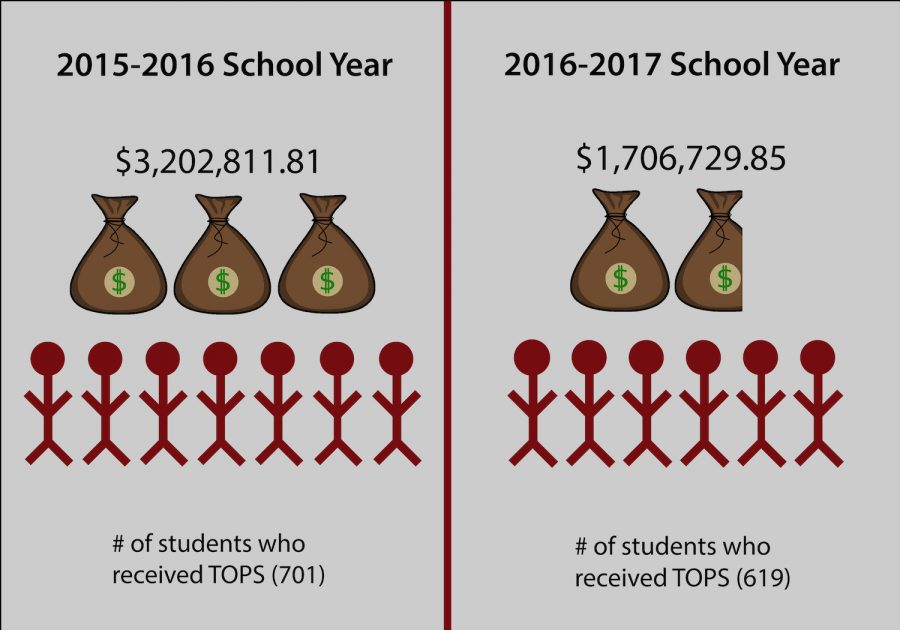TOPS deficits result in increased tuition costs for students
January 17, 2017
Katilyn Cleveland of Covington, Louisiana received news last school year that she might have to pay thousands of dollars more out-of-pocket for her tuition this semester.
Even though Loyola’s price of tuition for the 2016-2017 school year had only risen .02 percent, or $724, her Tuition Opportunity Program for Students scholarship was shrinking.
The change for Cleveland, mass communication sophomore, resulted from funding cuts to Louisiana’s TOPS program after the state legislature announced last year it was experiencing budget shortfalls.
“Choosing a school in Louisiana, you’re taking into consideration that money you’re receiving from TOPS, so when you hear they don’t have enough money or they may be running out of it, it doesn’t feel fair,” Cleveland said.
TOPS scholarships, offered through the Louisiana Office of Student Financial Assistance, are awarded to graduating Louisiana high school students who achieve exceptional grades and ACT or SAT scores and who plan to attend a four-year college in Louisiana.
Fully funded, TOPS is a $300 million a year program, but for this school year, TOPS funding was expected to fall short nearly $187 million, according to information released in April 2016 from the office of Louisiana Gov. John Bell Edwards.
In 2015-2016, the year Cleveland first earned her scholarship, over 50,000 Louisiana students received money from TOPS to cover tuition costs, according to the Louisiana Office of Student Financial Assistance. Therefore, many of those same students are experiencing similar, if not greater, monetary burdens to that of Cleveland.
Cleveland said she also receives an academic scholarship from Loyola, so for her, the strain is not as great as it could be.
“I know some people who chose other schools, public schools, in Louisiana, and they didn’t receive other academic scholarships, so they’re really relying on TOPS more,” Cleveland said.
She said the decrease in TOPS funding is now more a question of how much her student loan debt will amount to, as she may have to procure additional student loan money to cover her deficit.
In a separate November press release from Edwards, he said he hopes the state can restore funding to TOPS, although he did not say when that might be.
“In fact, despite the budget shortfalls we’re currently facing, we will not be making further cuts to this program,” Edwards added.
Loyola made a mission-based decision and announced last spring that we are committed to helping students realize any TOPS funding shortfall for the 2016-2017 academic year, even though TOPS is an agreement between the student and the state, but Cleveland points out that the university is not required to do so.
“It’s not Loyola’s fault that this is happening, so I wouldn’t be angry at Loyola if they weren’t covering what we don’t get,” Cleveland said.
While the Louisiana Office of Student Financial Assistance determined TOPS appropriations will cover 41.8 percent of students’ financial awards this semester, Cleveland is not certain what her financial aid package from TOPS will amount to from this point forward.









